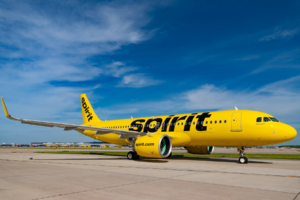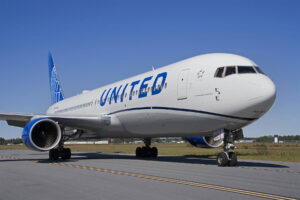An 18,000-foot Descent in 18 Minutes: “We Couldn’t See, We Couldn’t Breathe”

“We couldn’t see, we couldn’t breathe, and a piercing pain stabbed our ears.” Tammy Jo Shults, Captain of Southwest Airlines Flight 1380, wrote these chilling words in her new book, Nerves of Steel, about the flight she narrowly saved from disaster.
On April 17th, 2018, a Southwest flight from New York LaGuardia Airport was en route to Dallas Love Field when a fan blade separated from the engine, tore it apart, and sent debris hurtling towards the aircraft fuselage. Debris shattered the window of passenger Jennifer Riordan, who was partially sucked out due to the depressurization. Unfortunately, she died from her injuries.
It has been a year and half since the accident and the crew has remained relatively silent since the affair, only appearing in one interview. Because there was a death on the flight, they wanted to give the family time and space to grieve. Shults began writing her book after the event and has finally broken her silence with its publication this month.
In her book, Shults recounts her own emergencies as Captain of the nearly doomed aircraft and explains how she and First Officer Darren Ellisor barely avoided plummeting to the Earth. She explained that the lives of the 149 passengers on board that aircraft could have met a very different fate had certain things not gone right. She writes, “so many things had gone wrong that day, but so many things had gone right too. The distance between the explosion and Philadelphia was just the right distance for us to have made it to Philly. We couldn’t have made an airport any farther away.”
She explained in her story that the plane descended over 18,000 feet in 18 minutes as she fought to maintain control of the damaged aircraft. “I wasn’t sure how much more battering the aircraft could take before something else failed and we had a worse situation to deal with. We obviously needed the big pieces to remain attached in order to land,” she wrote.
A majority of the book discusses the events of flight 1380, however, Shults also goes into her time in the U.S. Navy and her journey from becoming one of the Navy’s first female pilots to becoming a Southwest Airlines Captain. Her journey was not easy, with accusations of her lying on her resume about an incident in the Navy in which she ran off the end of a runway due to a total loss of aircraft instruments. Southwest actually fired her because of this incident, but she was later cleared of fault by the Navy and was given her job back.
Although I do not work for the company anymore, I was actually an employee at Southwest Airlines during the accident. The event was difficult to cope with, to say the least. There was a level of guilt among us and it made us realize anything can happen at any point in time. Captain Shults and First Officer Ellisor are humble heroes and are respected across the industry for their quick-thinking, calm demeanor, and exceptional airmanship during the flight.
Today, Captain Shults flies once a month to keep her skills up. She explains that she is not traumatized by the event and that her blood pressure was normal after landing. She writes, “I don’t really think about it when I get into the cockpit. I don’t know why. Maybe it’s because I’ve been through a lot of flights where things have gone wrong. It’s what I’m trained for.”























“We couldn’t see, we couldn’t breathe" Couldn't breathe for 18 minutes?????????????? Not likely true.
18,000ft in 18 minutes? So 1000fpm? The horror...
Wow, hyperbole at its finest... funny how her "sell the most books" account differs from the official report she gave to the NTSB. A few examples; we couldn't see, we couldn't breathe evolved from "a puff of smoke" (which is the natural brief occurrence during a decompression at altitude due to moisture in the air). While "barely avoiding plummeting to the Earth" it's interesting to note that after first requesting the nearest divert airport the crew quickly decided they could make it back to Philadelphia instead. Then the crew elected to perform a long final approach rather than an expedited final. Only after learning of the passenger injuries did they switch to an expedited final. Both initial elections clearly contradict her breathless statements about barely staying airborne, and narrowly saving the aircraft from disaster. The bits about hoping big pieces remaining attached.... capitalization on readers' fear of flying at its best.
This shows just how important the simulator training is for pilots of jetliners. Once there's an issue, the pilots take command of the situation and are prepared to take care of the various systems failures that ensue with aircraft damage. What an exciting read this must be!
"Although I do not work for the company anymore, I was actually an employee at Southwest Airlines during the accident." -------- She no longer works for Southwest ?